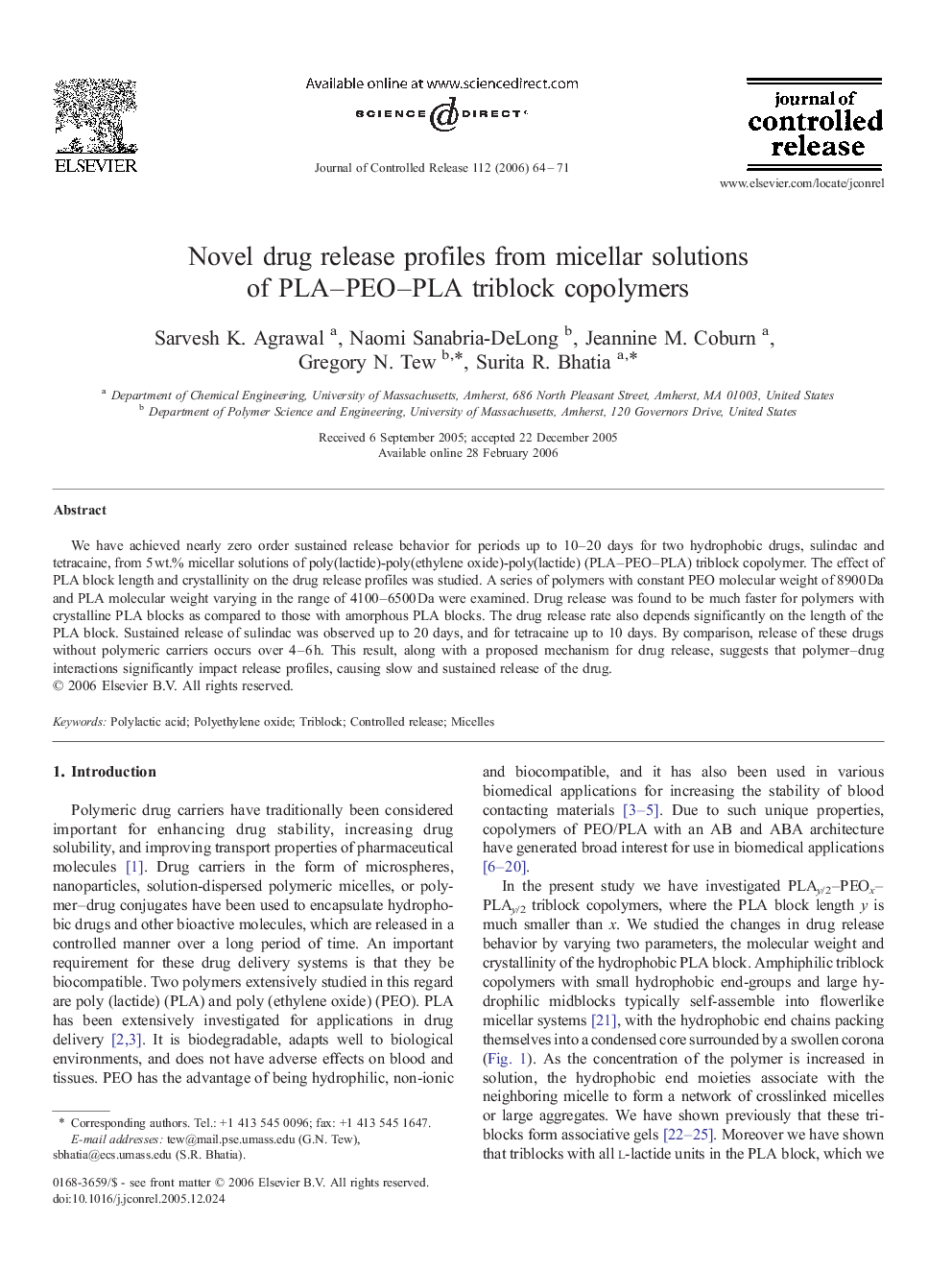| Article ID | Journal | Published Year | Pages | File Type |
|---|---|---|---|---|
| 1427551 | Journal of Controlled Release | 2006 | 8 Pages |
We have achieved nearly zero order sustained release behavior for periods up to 10–20 days for two hydrophobic drugs, sulindac and tetracaine, from 5 wt.% micellar solutions of poly(lactide)-poly(ethylene oxide)-poly(lactide) (PLA–PEO–PLA) triblock copolymer. The effect of PLA block length and crystallinity on the drug release profiles was studied. A series of polymers with constant PEO molecular weight of 8900 Da and PLA molecular weight varying in the range of 4100–6500 Da were examined. Drug release was found to be much faster for polymers with crystalline PLA blocks as compared to those with amorphous PLA blocks. The drug release rate also depends significantly on the length of the PLA block. Sustained release of sulindac was observed up to 20 days, and for tetracaine up to 10 days. By comparison, release of these drugs without polymeric carriers occurs over 4–6 h. This result, along with a proposed mechanism for drug release, suggests that polymer–drug interactions significantly impact release profiles, causing slow and sustained release of the drug.
